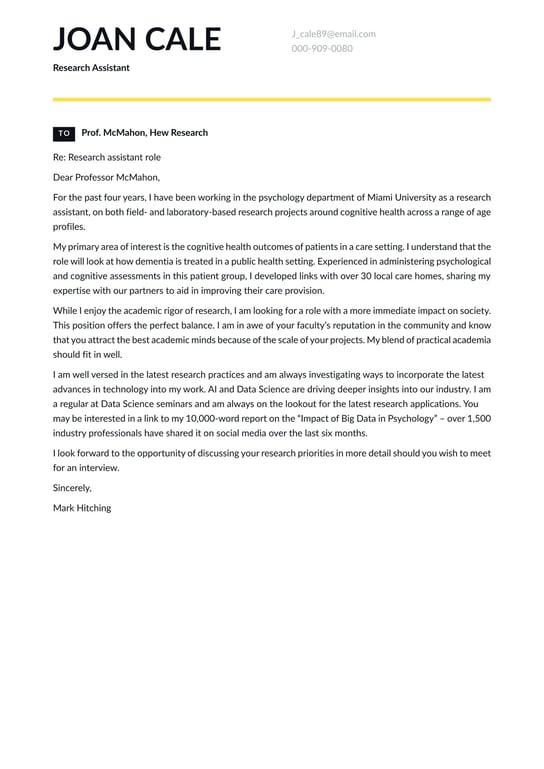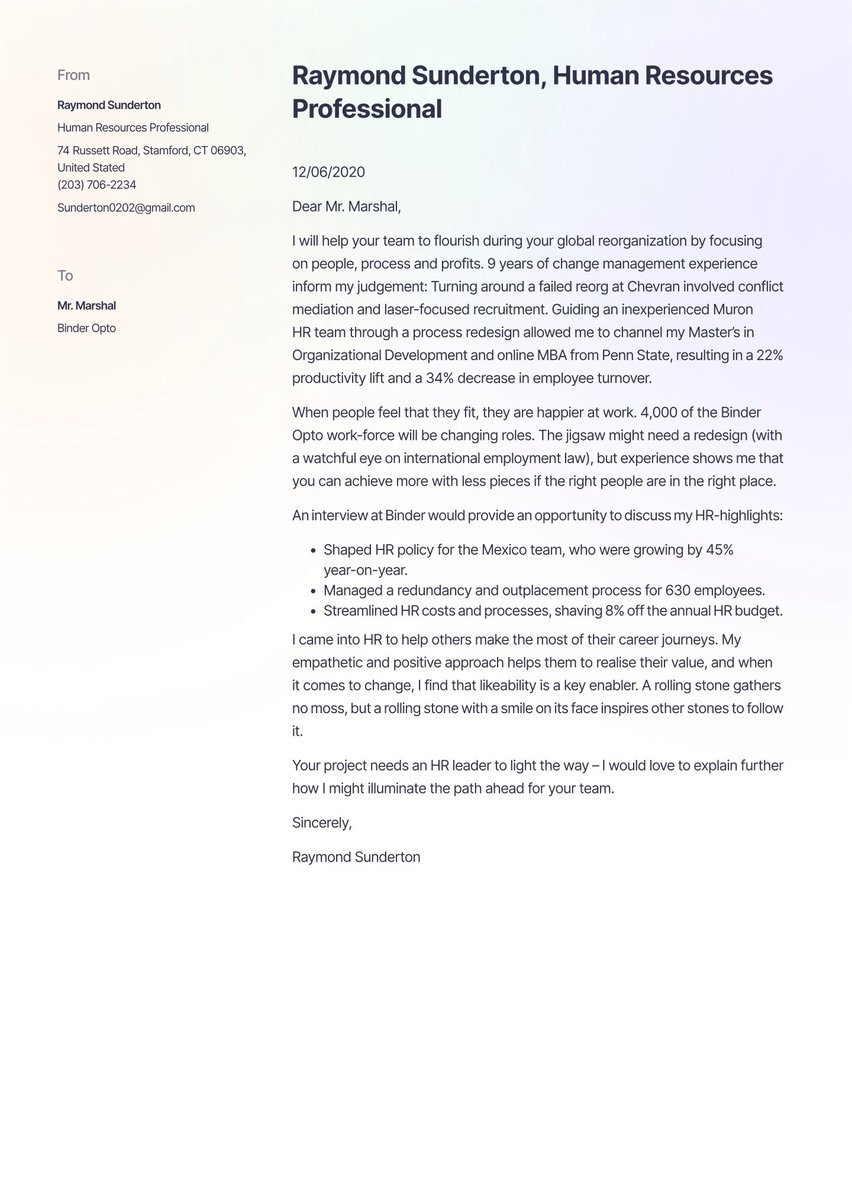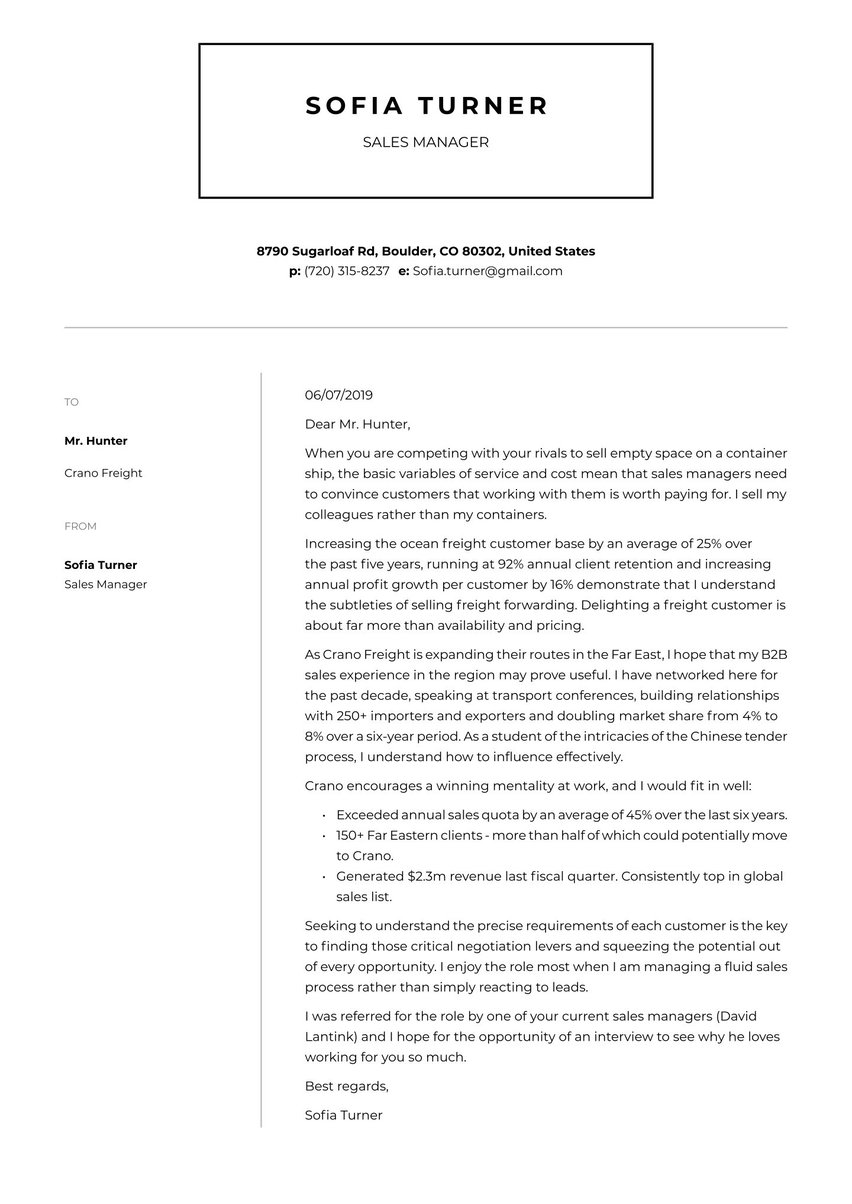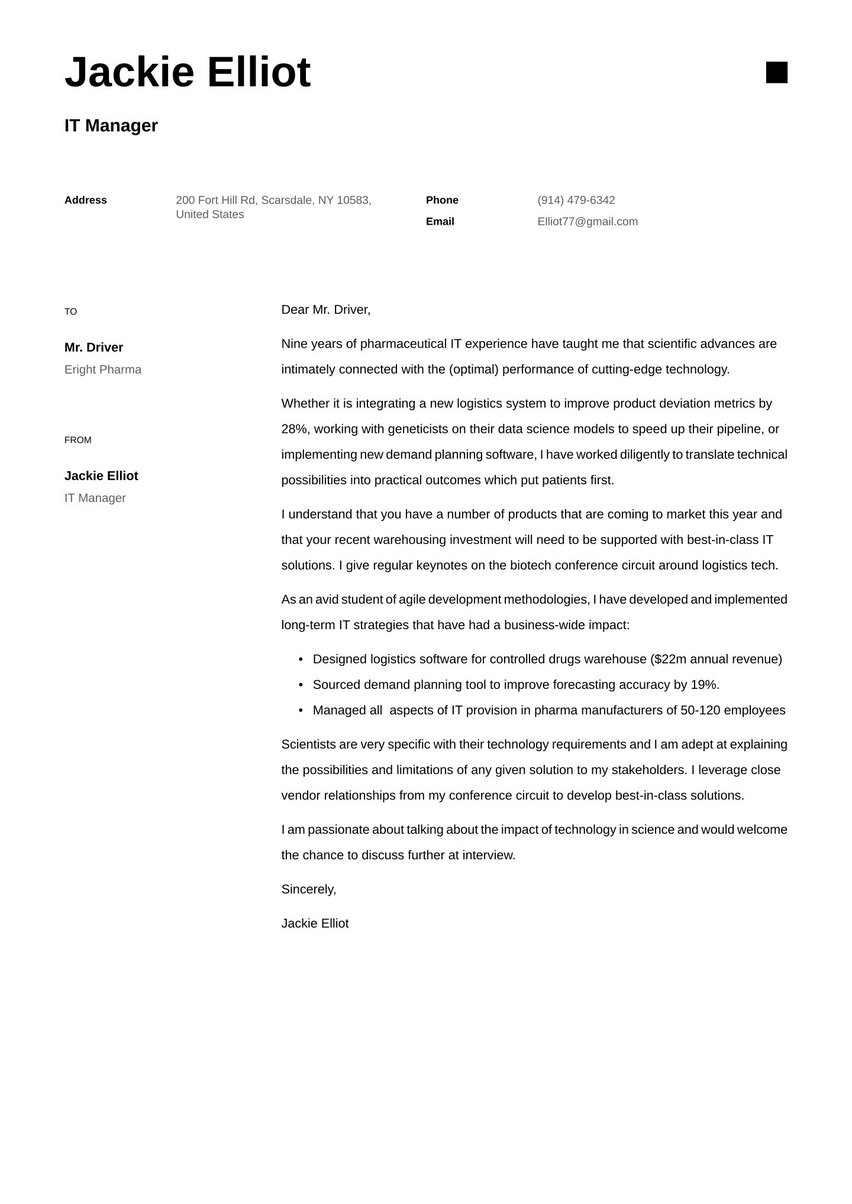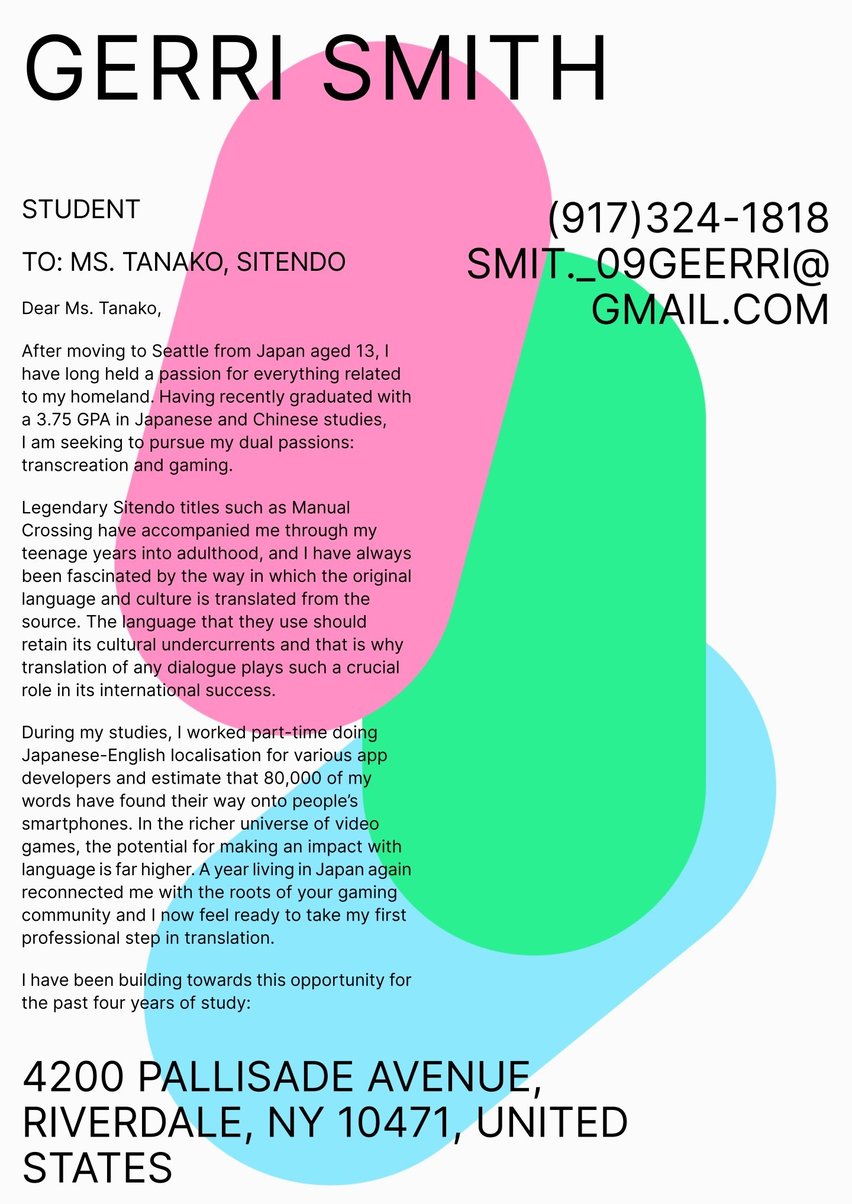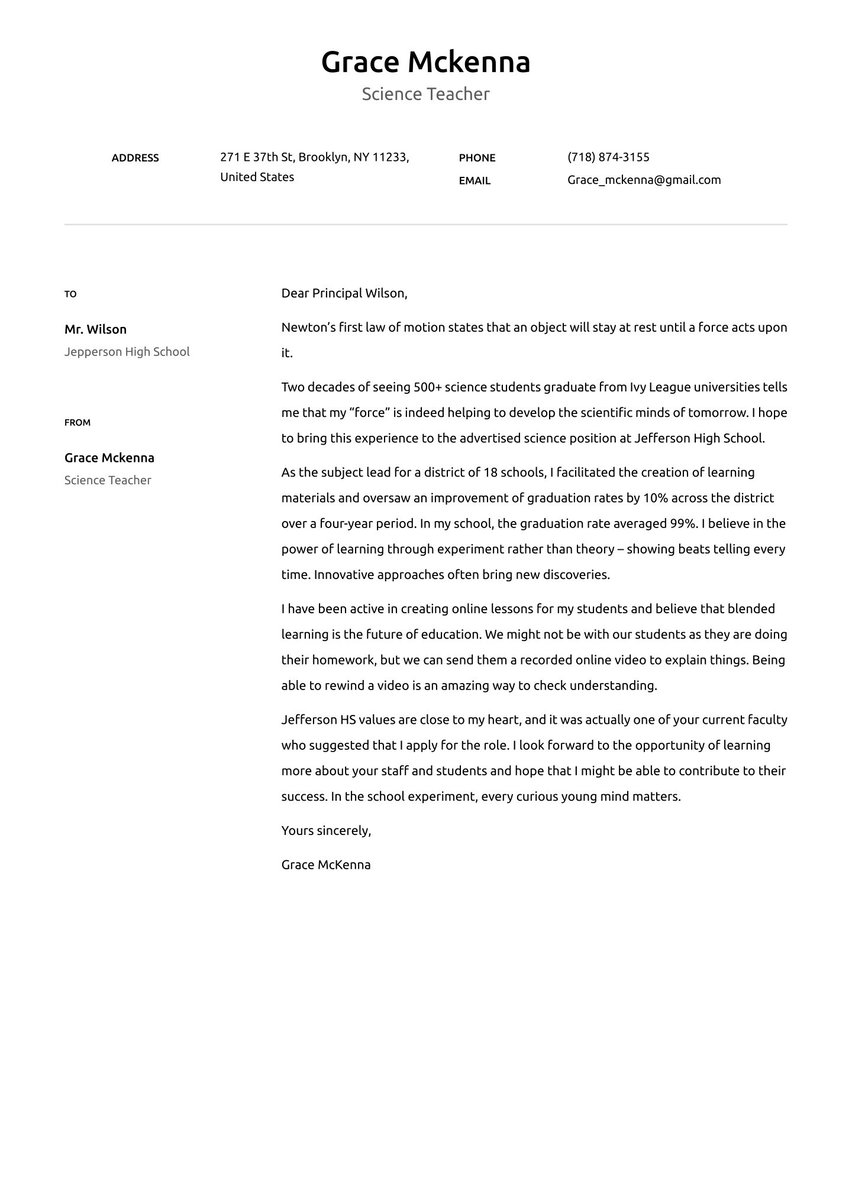No matter what your field of research is, describing how you go about your job is a vital part of securing your next role. Scientific success is as much about the process as it is about the result, so use the cover letter to explain how you go about your work. The research assistant cover letter examples below will show you how to do just that.
Many research assistants will come into the role from an academic background, so prove that you are ready for a more practical and commercial role. Start the research conversations that you wish to continue during an interview. The depth of your role can be mind-boggling, so where do you start?
Resume.io helps countless job seekers to find the right approach to their job search. Our resume and cover letter tools provide the backdrop for your story, while cover letter examples and writing guides help with the content. Many research assistant applications will be dry and functional. Allow yourself to show some personality alongside the parameters.
In this cover letter writing guide, you can expect to learn the following:
- How to best format a cover letter and where to tell various aspects of your story.
- What to include in the intro, middle, and conclusion.
- How to experiment with the right tone of voice to start the right conversations.
- Mistakes to avoid. They are unforgivable in the lab too, after all.
Most research assistant roles are in the scientific, accounting, or finance fields, according to stats by Adzuna. Examine carefully the demands of each role. Have you got the industry experience required? Which of your skills are transferable? Is there a track record of people moving industries? Be ambitious, but don’t waste your time.
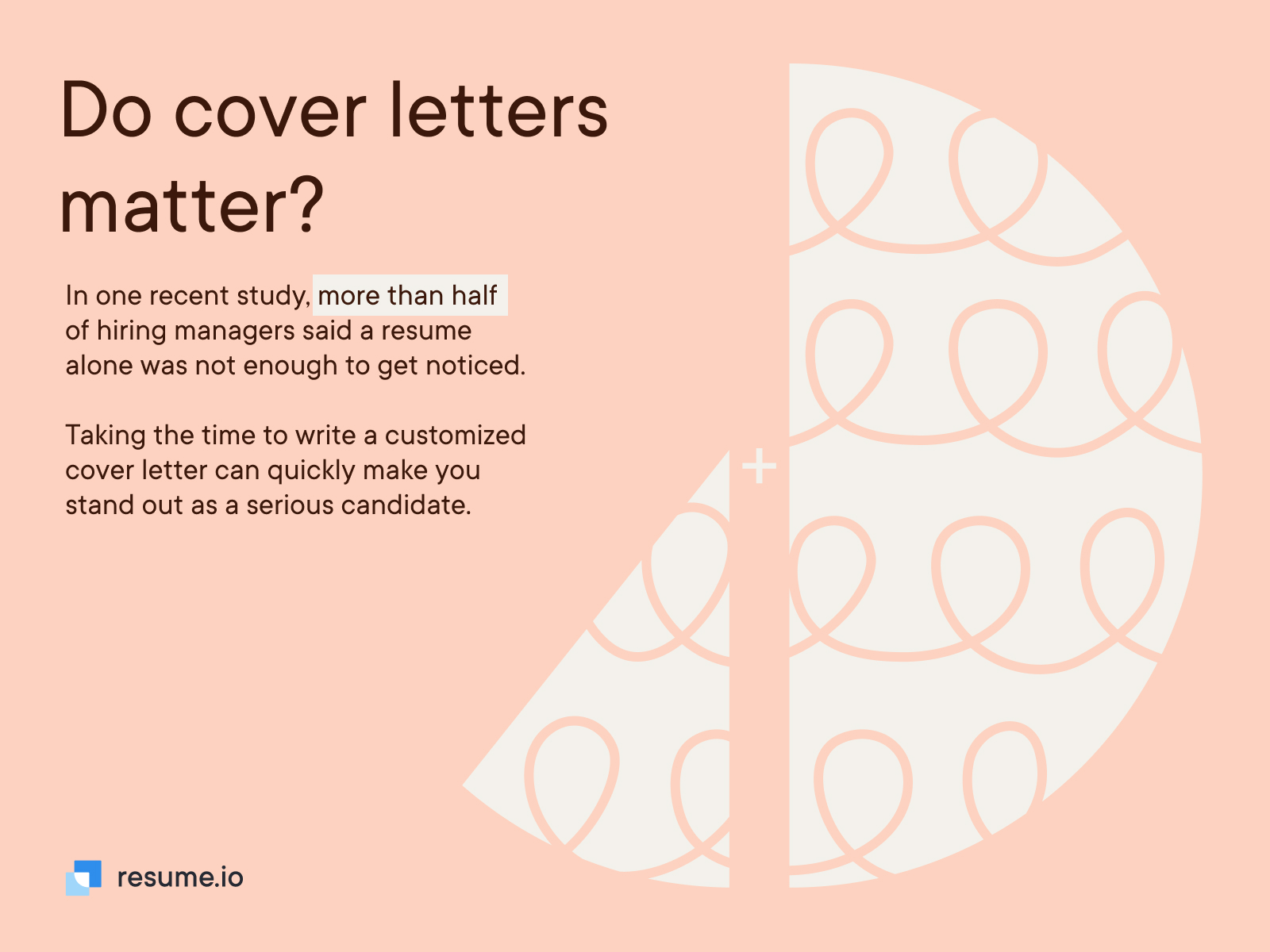
Best format for a research assistant cover letter
Just as you would carefully design an experiment, the structure of your cover letter allows the outcomes to slot into place. When you have some guidelines, decisions about which content to include will be simplified. Follow this standard cover letter format and you won’t go wrong. This is a tried-and-tested formula:
- Cover letter header
- Greeting (salutation)
- Cover letter introduction
- Middle paragraphs (body)
- The closing paragraph of your cover letter (conclusion and call-to-action)
Although you will only be able to concentrate on a few research stories, hiring managers understand the introductory nature of a cover letter. They know there is much more detail behind your words, so don’t feel like you need to pack in everything. Share a relevant example or two in each research assistant cover letter section – pique their interest.
There is a lot more to writing a cover letter than meets the eye. If writing isn’t your forte, our guide to cover letter writing is worth investigating. Every hiring manager will have read hundreds of cover letters during their careers, so explore the tricks that can help you stand out. Your cover letter will certainly be read if there is an interest in your application. We will help you make it powerful and easy to read.
Have a look at our full research assistant cover letter example:
Re: Research assistant role
Dear Professor McMahon,
For the past four years, I have been working in the psychology department of Miami University as a research assistant, on both field- and laboratory-based research projects around cognitive health across a range of age profiles.
My primary area of interest is the cognitive health outcomes of patients in a care setting. I understand that the role will look at how dementia is treated in a public health setting. Experienced in administering psychological and cognitive assessments in this patient group, I developed links with over 30 local care homes, sharing my expertise with our partners to aid in improving their care provision.
While I enjoy the academic rigor of research, I am looking for a role with a more immediate impact on society. This position offers the perfect balance. I am in awe of your faculty’s reputation in the community and know that you attract the best academic minds because of the scale of your projects. My blend of practical academia should fit in well.
I am well versed in the latest research practices and am always investigating ways to incorporate the latest advances in technology into my work. AI and Data Science are driving deeper insights into our industry. I am a regular at Data Science seminars and am always on the lookout for the latest research applications. You may be interested in a link to my 10,000-word report on the “Impact of Big Data in Psychology” – over 1,500 industry professionals have shared it on social media over the last six months.
I look forward to the opportunity of discussing your research priorities in more detail should you wish to meet for an interview.
Sincerely,
Mark Hitching
Cover letter header
The header of a cover letter contains the essentials of your application. If the hiring manager wants to invite you to an interview, your full contact details should be here, as well as on your resume. Include your full name, email address, and mobile number. Use plain text and, if this is an electronic document, hyperlinks where possible. Make it as easy as possible to get in touch with you.
There is no requirement to include your full postal address – there are potential data protection issues. Employers will ask for it at the offer stage. You can also save space by excluding the inside address of the employer unless you wish to be overly formal.
Stick to a simple color scheme and design. Research professionals do not require an appreciation for the niceties of design, so let your career stories do the talking.
Cover letter greeting and introduction
The cover letter greeting is not something that any research assistant should struggle with. As you are applying for an academic or scientific role, a reasonable level of formality is expected, so addressing the hiring manager as “Dear Mr./Mrs./Dr. Surname” is normal.
Normally, the name of the hiring manager would be included in the job description. If this is not the case, it is acceptable to phone the company to find out. You might even get the chance to ask the receptionist any basic questions that you might have. If you do not know their name, a “Dear Company Team” is fine. Avoid the cold and impersonal “To whom it may concern” as that conveys a generic vibe.
After the greeting, the introduction is where your story starts.
I would suggest leading with a hyper-specific example from your past research work which will indicate that you have what it takes to ace the role in question. Researchers appreciate detail, so get as granular as possible with your sales pitch. While your competition is left relying on meaningless adjectives to describe their experience, you need to start straight away with the big guns.
Lead with context and quantifiable facts about how your work made a difference. How did your techniques produce the optimal results? Share your attitudes about your work and explain why you are uniquely suited to the role in question. Decision-making is a key aspect of a research role – use examples that demonstrate judgment and a calculated approach.
Resist the temptation to share your most impressive achievements. It is possible that some of them won’t be suitable for the role. Only share what is relevant. At no point do you want the hiring manager to think: “impressive, but that isn’t quite what we do here.”
This cover letter sample introduction offers a potential solution:
Dear Professor McMahon,
For the past four years, I have been working in the psychology department of Miami University as a research assistant, on both field- and laboratory-based research projects around cognitive health across a range of age profiles.
Cover letter middle part (body)
The middle section of a cover letter is where you get the chance to expand on the factual detail of your resume. This is your chance to add some personality, explore the context of your achievements, and tell the hiring manager exactly why you are the right person for the role. Your understanding of what lies ahead should come across loud and clear.
Now is the time for your research projects to shine. Restrict yourself to one or two sentences for each one, packed with detail about the tasks involved and how you came to the outcomes. Show how your education made a difference to your work and mention your ongoing journey of personal development. Let the hiring manager know what comes next – they would be suspicious if you didn’t have further ambitions.
Analyze the job description and pick out a couple of requirements that are least likely to be fulfilled by your fellow applicants. Be clear about your fit in these areas and present yourself as the unicorn candidate of choice. Give the hiring manager the impression that you will be in demand but be unequivocal in your desire to secure this specific role. Tell them why their research priorities are an ideal fit for your career journey.
The middle part of the cover letter below explores a couple of approaches:
My primary area of interest is the cognitive health outcomes of patients in a care setting. I understand that the role will look at how dementia is treated in a public health setting. Experienced in administering psychological and cognitive assessments in this patient group, I developed links with over 30 local care homes, sharing my expertise with our partners to aid in improving their care provision.
While I enjoy the academic rigor of research, I am looking for a role with a more immediate impact on society. This position offers the perfect balance. I am in awe of your faculty’s reputation in the community and know that you attract the best academic minds because of the scale of your projects. My blend of practical academia should fit in well.
I am well versed in the latest research practices and am always investigating ways to incorporate the latest advances in technology into my work. AI and Data Science are driving deeper insights into our industry. I am a regular at Data Science seminars and am always on the lookout for the latest research applications. You may be interested in a link to my 10,000-word report on the “Impact of Big Data in Psychology” – over 1,500 industry professionals have shared it on social media over the last six months.
How to close a research assistant cover letter (conclusion and sign-off)
The close of a research assistant cover letter should hit home like a scientific conclusion. You have presented all the evidence to prove that you are a worthy candidate for the role, so here is one last reason to hire you. Build on the case – don’t repeat what has been said.
Close the cover letter with a curious hope to find out more about the role during an interview. Research is a complicated industry, so it is natural that you will have many questions. Avoid any note of presumption. You don’t know who else is going for the role and you cannot know the mind of the hiring manager at this early stage. Consider the tone of our example below:
I look forward to the opportunity of discussing your research priorities in more detail should you wish to meet for an interview.
Sincerely,
Mark Hitching
Mistakes to avoid
When you work in research, attention to detail is a given. When writing a job application, therefore, you can be sure that the eagle eye of the hiring manager will be scanning for any mistakes that might hint at carelessness. Writing might well not be your first love, so do your best to avoid the following obvious errors:
- Grammar issues: Spelling and grammar are not hard to check with an online service such as Grammarly. Consider asking family or friends to proofread and check that the cover letter “sounds” like you. You may be surprised what they pick up on.
- Use academic language: While your cover letter should be personable, you need to make sure that you write in scientific language. Keep sentences short and avoid being overly descriptive.
- Keep it simple: Consider the look of the cover letter and make it an easy read. White space is particularly important in this regard, so don’t pack the page with text. Use bullet-pointed lists and shorter paragraphs where appropriate.
The hiring manager needs to be focused on the positive aspects of your application, not distracted by nagging concerns about minor mistakes.
Key takeaways
- Build your research story around the tried-and-tested cover letter structure.
- Choose the most appropriate of our cover letter templates to give the right visual look.
- Hit the appropriate notes with the tone and register of your scientific language.
- Talk about your personal impact on projects and on those around you.
Some of the following medical and administrative examples may help:

